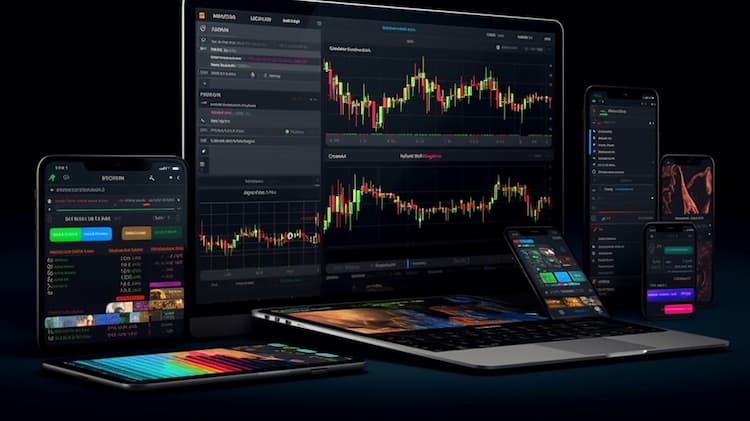
How to find symbols of the stocks in XLI?
When it comes to investing in ETFs (Exchange-Traded Funds) and other financial instruments, understanding the symbols of the stocks within the ETF is crucial. In this article, we will explore the topic of finding symbols of the stocks in XLI, one of the popular ETFs in the market. Whether you're a beginner or an experienced investor, this guide will provide you with valuable insights.
XLI ETF Overview and Symbol Identification
XLI is an ETF that represents the Industrial Select Sector, composed of companies in industries such as aerospace, defense, machinery, and more. To find the symbols of the stocks in XLI, you can visit the official website of the ETF provider, such as State Street Global Advisors, the issuer of XLI. On their website, you can navigate to the XLI ETF page and find a list of the constituent stocks along with their symbols. Alternatively, financial data platforms like Yahoo Finance and Bloomberg also provide comprehensive information on ETFs, including their holdings and associated stock symbols.
How Can I Find the Symbols of Individual Stocks within XLI?
If you are specifically looking for the symbols of individual stocks within XLI, there are multiple ways to obtain this information. One approach is to visit the official website of the ETF issuer, as mentioned earlier. On their website, you can find the current list of stocks held by XLI and their respective symbols. Another option is to use financial data platforms that offer comprehensive information on individual stocks, such as the Bloomberg Terminal or online brokerage platforms. These platforms provide detailed profiles of stocks, including their symbols, financials, and historical performance.
 XLI overlap How to find symbols of the stocks in XLI?
XLI overlap How to find symbols of the stocks in XLI?
How Often Are the Stocks within XLI Updated?
The composition of an ETF like XLI can change over time due to various factors, such as corporate actions, market conditions, or the ETF manager's investment strategy. As a result, it is important to stay updated on the stocks held within XLI. The ETF provider's website or financial data platforms are reliable sources to monitor changes in the ETF's holdings. Additionally, subscribing to newsletters or following reputable financial news websites can keep you informed about any significant updates or announcements related to XLI. By staying proactive and informed, you can make well-informed investment decisions.
Are There Any Online Tools to Simplify Symbol Search for XLI Stocks?
Yes, there are online tools available that simplify the symbol search for stocks within XLI. Websites like NASDAQ and NYSE provide search functionalities where you can enter the name or ticker symbol of the ETF (XLI) and access a list of its constituent stocks and their symbols. These tools can be particularly useful if you are looking for a quick and convenient way to find the symbols of the stocks within XLI. Additionally, financial data platforms and online brokerage platforms also offer search options to find symbols of individual stocks, making it easier to identify and track specific stocks within XLI.
Finding symbols of the stocks within XLI, or any ETF, is essential for investors looking to track the performance of individual stocks within the fund. By visiting the official website of the ETF issuer, utilizing financial data platforms, or leveraging online tools, you can easily access the symbols of the stocks in XLI. Staying informed about changes in the ETF's holdings and monitoring the market can help you make informed investment decisions. Remember to rely on reliable sources and do thorough research before making any investment choices.
Disclaimer: This article is for informational purposes only and does not provide any investment advisory services. Always consult with a qualified financial advisor before making investment decisions.
Source 1: XLI issuer website
Source 2: Reuters article about XLI
XLI quote and analysis
Discover the top holdings, correlations, and overlaps of ETFs using our visualization tool.
Our app allows you to build and track your portfolio.
To learn more about the XLI Industrial Select Sector SPDR Fund, access our dedicated page now.
FAQ
What are the risks associated with investing in XLI?
Some risks associated with investing in XLI, the Industrial Select Sector SPDR Fund, include general market risks, economic conditions affecting the industrial sector, volatility in industrial stocks, regulatory changes impacting the sector, competition within the industry, and the performance of individual companies within the ETF. It is important to consider these risks and conduct thorough research before making investment decisions.
How to find symbols of the stocks in XLI?
You can find the symbols of the stocks held by XLI by referring to the ETF's prospectus, the fund manager's website, or financial websites that provide information on ETF holdings. These sources typically list the individual stocks and their corresponding ticker symbols included in the XLI ETF.
Are there any alternatives to XLI for investing in the industrial sector?
Yes, there are alternative ETFs and investment options available for investing in the industrial sector. Some examples include the Vanguard Industrials ETF (VIS), the iShares U.S. Industrials ETF (IYJ), and other mutual funds or actively managed funds that focus on the industrial sector. It is recommended to compare the features, costs, and performance of different investment options and consider individual investment goals before making a decision.
What is XLI stock?
XLI is not a stock itself but an exchange-traded fund (ETF) that represents the Industrial Select Sector. It provides investors with exposure to a diversified portfolio of stocks in the industrial sector.
What is XLY in stock sectors?
XLY refers to the Consumer Discretionary Select Sector SPDR Fund, an exchange-traded fund that tracks the performance of the Consumer Discretionary Select Sector Index. It includes stocks from sectors such as retail, media, travel, leisure, and other consumer discretionary industries.



